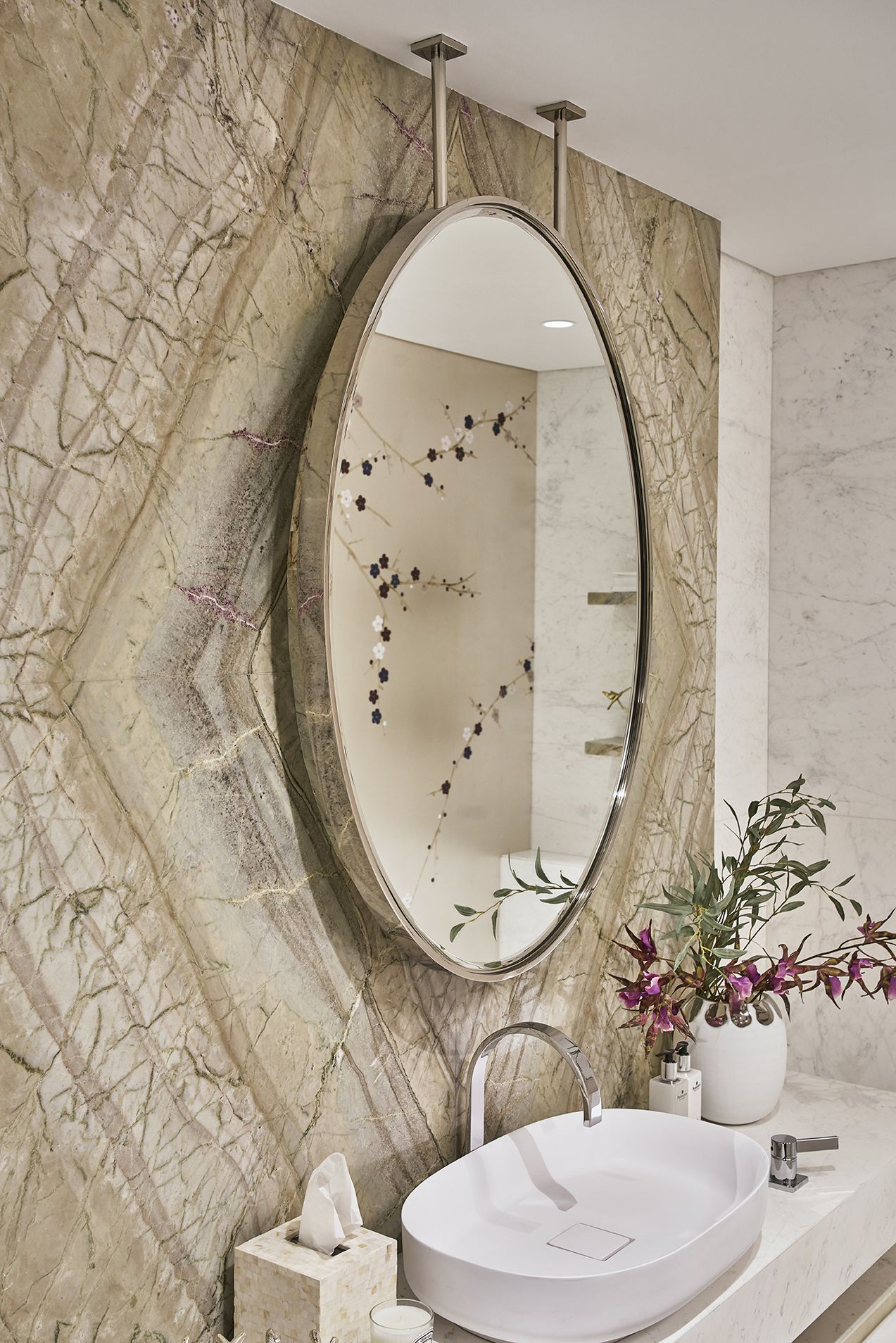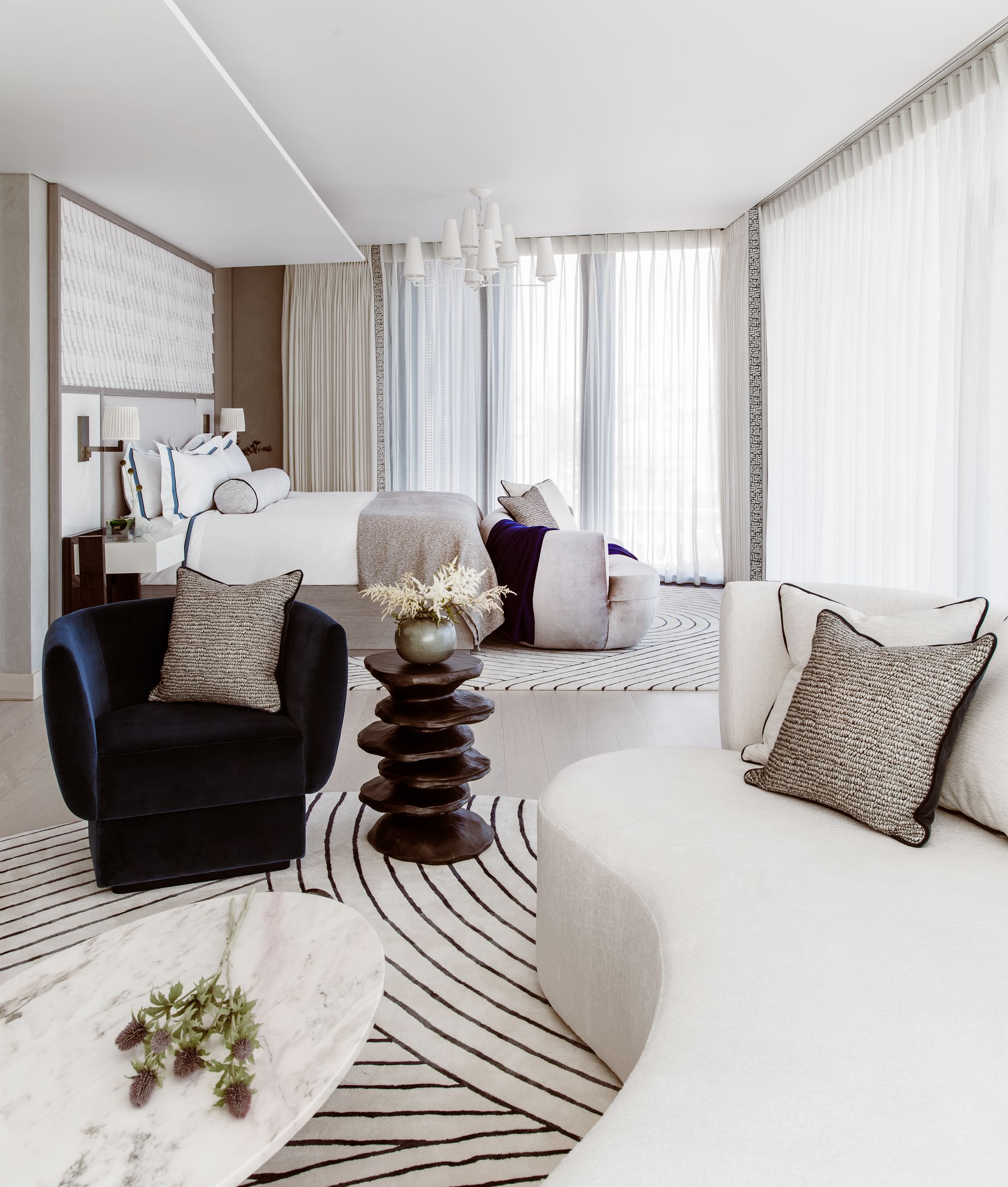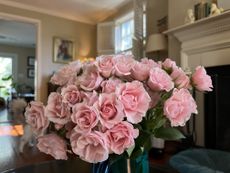How to use curves to add flow and dynamism in interior design
The London-based interior designer explains how curved lines can transform room designs
- (opens in new tab)
- (opens in new tab)
- (opens in new tab)
- Sign up to our newsletter Newsletter


Using curved lines within a home offers a wealth of benefits, including the potential to add both flow and dynamism.
Line is an important consideration in interior design in order to make a room well-balanced and visually pleasing, and here I examine how to introduce curves and the effect they will have.

Charu Gandhi is Founder & Director, Elicyon. Charu Gandhi is a qualified Architect, registered with RIBA and ARB, who studied and taught at the Architectural Association before joining the London offices of Allies & Morrison Architects in 2006, where she worked on exceptional residential and hospitality projects in Beirut, Kerala and Qatar. Her portfolio of commissions also included the Doha National Library and the London Olympics Masterplan. Now in its seventh year, Elicyon is creating luxury, bespoke interiors for private clients, residential developers and boutique hotels in some of London’s most illustrious addresses, as well as around the world. Elicyon’s recent projects include the first ever show apartment at Chelsea Barracks, private homes within Claridges, Mayfair Park Residences and boutique property development, Beaufort Gardens in Kensington. Elicyon is also currently working on a number of ambitious, large scale projects in the Middle East.
1. Contrast curves with formal lines

Curves work equally as well in a traditional setting as in a contemporary scheme, though I find the style works best when you include a mix of classic furniture alongside modern, curved elements. Hard, more formal lines juxtaposed with soft curves tend to work well in a space.
2. Exploit the benefits of curves in large and small rooms

For smaller spaces, curved furniture can really help to soften the room and extend the eyeline, whereas in larger spaces, big sweeping curves create cozy, cocooning, warm moments.
3. Create a focal point with curves

If you’re looking to subtly add curves to a space, mirrors or artwork with curved frames are a lovely way to add interest and create a focal point within a room without the need to redesign the entire layout.
4. Focus on pattern and edge

If curved furniture feels a step too far, it can be fun to experiment with accessories and furnishings that incorporate a curved edge or pattern. Scalloped trims on rugs and pillows are a great way to add some softer lines into a living space and also give you a chance to experiment with pops of colour or pattern on the trim.
5. Be aware of proportion

Getting the proportions right when using curved furnishings is essential. As with all pieces, you want to avoid couches or armchairs looking clunky and uncomfortable, so it’s important to carefully measure the base of the piece and back for maximum comfort. Don’t go for style over substance!
If possible when designing a bespoke curved piece, it’s useful to see the product in 3D before it is made; often seeing it on paper or on a plan does not give a true sense of the dimensions and overall aesthetic.
6. Select the right furniture fabrics

My favorite fabrics to use when working with curved furniture are textured woven fabrics and bouclé. It’s paramount to get the padding just right to avoid any puckering. If you are working with a furniture maker or upholsterer, they’ll be able to advise on the best fabrics for your piece.
7. Opt for plains with texture

Patterned fabric can look very effective on curved furniture, but it can also be a painfully fiddly to match and align along all the edges, so unless you’re really set on a very specific pattern, I’d advise using a plain fabric and having fun with the texture instead.

Charu Gandhi is Founder & Director, Elicyon. Charu Gandhi is a qualified Architect, registered with RIBA and ARB, who studied and taught at the Architectural Association before joining the London offices of Allies & Morrison Architects in 2006, where she worked on exceptional residential and hospitality projects in Beirut, Kerala and Qatar. Her portfolio of commissions also included the Doha National Library and the London Olympics Masterplan. Now in its eighth year, Elicyon is creating luxury, bespoke interiors for private clients, residential developers and boutique hotels in some of London’s most illustrious addresses, as well as around the world.
-
-
 Valentine's Day gift ideas 2023: 24 last-minute luxuries for your loved ones
Valentine's Day gift ideas 2023: 24 last-minute luxuries for your loved onesFrom the timeless beauty of a traditional bouquet of flowers to unique houseplants and fun sweet treats, our selection of Valentine's Day gift ideas will be sure to inspire
By Zara Stacey • Published
-
 Robert Pattinson just bought a Spanish Colonial-style home – with an interior designer past
Robert Pattinson just bought a Spanish Colonial-style home – with an interior designer past'The Batman's' Robert Pattinson and Suki Waterhouse purchased the Jeff Lewis-designed Hollywood Hills estate for $5.3 million
By Megan Slack • Published

